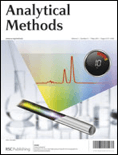
Analytical Methods
Scope & Guideline
Advancing the Frontiers of Analytical Science
Introduction
Aims and Scopes
- Chemical Analysis Techniques:
The journal publishes research on various chemical analysis methods, including chromatography, mass spectrometry, and electrochemical techniques, highlighting advancements that improve detection limits and speed. - Biosensing Applications:
It features studies on biosensors for detecting biological markers, pathogens, and toxins, often integrating nanomaterials to enhance sensitivity and specificity. - Environmental Monitoring:
Research on methods for the detection and quantification of pollutants in environmental samples is a significant focus, particularly regarding water quality and food safety. - Nanotechnology and Materials Science:
The journal explores the use of nanomaterials in analytical chemistry, including their role in enhancing sensor performance and developing new detection methodologies. - Point-of-Care Testing Innovations:
There is a consistent emphasis on developing portable, easy-to-use analytical devices for rapid testing in clinical, environmental, and food safety contexts.
Trending and Emerging
- CRISPR-Based Detection Methods:
The integration of CRISPR technology into various biosensing platforms has gained momentum, enabling highly sensitive and specific detection of nucleic acids and proteins, marking a significant advancement in diagnostic methodologies. - Nanomaterial-Enhanced Sensors:
The use of nanomaterials, such as carbon dots and metal-organic frameworks, is increasingly prevalent in sensor development, enhancing sensitivity and selectivity for various analytes across different applications. - Machine Learning in Analytical Chemistry:
There is an emerging trend towards incorporating machine learning algorithms in data analysis and interpretation, improving the accuracy and efficiency of analytical processes, particularly in complex datasets. - Eco-Friendly Analytical Techniques:
Research focusing on sustainable and green chemistry practices, including the development of environmentally friendly solvents and methods, is on the rise, reflecting a broader awareness of ecological impacts. - Portable and On-Site Analytical Devices:
The trend towards developing portable analytical devices for on-site testing is gaining traction, particularly in fields like environmental monitoring and point-of-care diagnostics, emphasizing rapid and accessible testing.
Declining or Waning
- Traditional Spectroscopy Techniques:
Though still relevant, the publication frequency of conventional methods like UV-Vis and IR spectroscopy has decreased as researchers increasingly adopt more sensitive and specific techniques such as SERS and fluorescence-based methods. - Historical Analytical Methods:
Research centered on classical methods of analysis, such as gravimetric and titrimetric techniques, has become less common, reflecting a shift towards more modern and efficient approaches. - Manual Sample Preparation Methods:
There is a noticeable decline in studies focusing on labor-intensive manual sample preparation techniques as automated and miniaturized methods become more prevalent, improving efficiency and reproducibility. - Basic Chemical Reactions in Analysis:
Research that primarily discusses fundamental chemical reactions without integration into novel methodologies or applications has waned, as the journal emphasizes innovative approaches.
Similar Journals
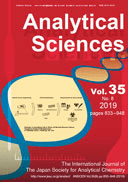
ANALYTICAL SCIENCES
Exploring the Depths of Analytical ExcellenceANALYTICAL SCIENCES, published by SPRINGERNATURE, is a prestigious journal established in 1985 dedicated to advancing the field of analytical chemistry. With an ISSN of 0910-6340 and an E-ISSN of 1348-2246, this journal plays a critical role in disseminating high-quality research and innovative methodologies. Operating from Switzerland, it aims to provide a platform for scholars, researchers, and professionals to explore significant developments and applications in analytical techniques. Although classified in the third quartile (Q3) of analytical chemistry, which places it in a competitive framework (Rank #96/156, 38th Percentile in Scopus), its impact on the discipline is noteworthy. While it is not currently an open-access journal, the resources within are invaluable for those seeking to stay at the forefront of research and practice in analytical sciences, making it an essential read for anyone involved in this dynamic field. The journal continues to converge critical insights from 1985 to 2024, fostering a community dedicated to innovation and excellence in analytical chemistry.

Methods and Objects of Chemical Analysis
Shaping the Future of Chemical Analysis TogetherMethods and Objects of Chemical Analysis is a significant outlet in the field of Analytical Chemistry, published by the prestigious TARAS SHEVCHENKO NATIONAL UNIVERSITY OF KYIV in Ukraine. Since its inception in 2017, this journal has aimed to advance methodological and analytical understanding within the discipline, addressing contemporary issues and innovative techniques. With a Scopus rank of #133 out of 156 and a Q4 Category Quartile for 2023, it offers a platform for researchers and professionals to disseminate crucial findings and methodologies. While currently serving as a traditional journal, it is fostering an academic community focused on impactful research that enhances our understanding of chemical analysis techniques. The journal’s commitment to scholarly rigor and its relevance in a rapidly evolving field make it a valuable resource for students and seasoned researchers alike, seeking to remain at the forefront of analytical advancements.

Pakistan Journal of Analytical & Environmental Chemistry
Bridging Science and Sustainability in PakistanPakistan Journal of Analytical & Environmental Chemistry, published by the University of Sindh, National Centre of Excellence Analytical Chemistry, is a distinguished platform that has been committed to promoting high-quality research in the fields of analytical and environmental chemistry since its inception. With an ISSN of 1996-918X and an E-ISSN of 2221-5255, this journal has established itself as an open-access resource since 2007, facilitating the dissemination of knowledge to a global audience. Acknowledged for its contributions, the journal currently holds a Q4 category ranking in both Analytical Chemistry and Environmental Chemistry as of 2023, with Scopus rankings placing it within the challenging competitive bracket. The journal aims to publish original research, reviews, and technical notes that elucidate contemporary challenges and advancements, making it an essential read for researchers, professionals, and students who are exploring innovative methodologies and solutions in chemical analysis and environmental monitoring. By fostering a collaborative research environment and encouraging multidisciplinary approaches, the Pakistan Journal of Analytical & Environmental Chemistry plays a crucial role in advancing the field and addressing environmental concerns in Pakistan and beyond.

Talanta Open
Fostering Collaboration in Chemical ResearchTalanta Open (ISSN: 2666-8319) is a prominent open-access journal published by Elsevier, dedicated to advancing the field of Analytical Chemistry. Established in 2020, the journal aims to foster innovative research and facilitate knowledge sharing in the analysis of chemical substances and their interactions. With an impressive Q2 ranking in the Analytical Chemistry category and a commendable Scopus ranking of #57/156, Talanta Open has quickly established itself as a vital resource for researchers, professionals, and students alike. The journal is known for its rigorous peer-review process and commitment to quality, ensuring that published content significantly contributes to the scientific community. By providing unrestricted access to high-quality research, Talanta Open underscores the importance of collaboration and accessibility in the ever-evolving landscape of analytical science.
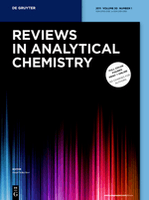
REVIEWS IN ANALYTICAL CHEMISTRY
Elevating Standards in Analytical Chemistry DiscourseREVIEWS IN ANALYTICAL CHEMISTRY, published by De Gruyter Poland Sp. z o.o., serves as a pivotal resource in the field of analytical chemistry, with a notable impact factor indicative of its scholarly significance. As an Open Access journal since 2020, it ensures widespread dissemination of high-quality research articles, facilitating knowledge sharing among researchers, professionals, and students alike. With its origins tracing back to 1980, the journal has adeptly adapted over the years to encompass emerging trends and innovations within analytical methodologies, maintaining its relevance and authority in the discipline. The journal is ranked in the Q2 category of analytical chemistry in 2023 and holds a commendable Scopus rank of #32 out of 156, reflecting its strong performance and the quality of the studies published. Researchers looking for cutting-edge reviews and insights will find this journal an invaluable platform for advancing their knowledge and research in analytical chemistry.
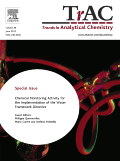
TRAC-TRENDS IN ANALYTICAL CHEMISTRY
Exploring the Frontiers of Analytical InnovationTRAC - Trends in Analytical Chemistry is a prestigious journal published by Elsevier Science Ltd, situated in the Netherlands. With an impressive impact factor reflected in its Q1 rankings across three major categories—Analytical Chemistry, Environmental Chemistry, and Spectroscopy—this journal stands at the forefront of disseminating pioneering research and advancements in the field of analytical chemistry. Established in 1981, TRAC provides a comprehensive platform for researchers to share influential studies and insights related to the latest trends, methodologies, and technologies in analytical techniques. Recognized globally, the journal excels in fostering cross-disciplinary dialogue and innovation, making it an indispensable resource for academics, professionals, and students alike. Explore the latest issues to stay abreast of cutting-edge developments that shape the analytical sciences.
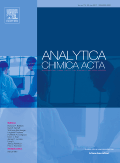
Analytica Chimica Acta
Pioneering insights in analytical and environmental chemistry.Analytica Chimica Acta is a prestigious peer-reviewed journal published by ELSEVIER, renowned for its significant contribution to the fields of analytical chemistry, biochemistry, environmental chemistry, and spectroscopy. Established in 1947, this journal has solidified its reputation, reflected in its impressive impact factors and Scopus rankings, including a Q1 classification in Analytical Chemistry and Spectroscopy, and a Q2 ranking in both Biochemistry and Environmental Chemistry. With its comprehensive scope, Analytica Chimica Acta aims to publish innovative research, critical reviews, and technical notes that advance the understanding and application of analytical methods. As an essential resource for researchers, professionals, and students alike, it encourages the dissemination of high-quality research that addresses contemporary challenges in chemical analysis and promotes interdisciplinary collaboration. While the journal operates primarily on a subscription basis, it also offers unique opportunities for authors to reach a broad audience and engage in the global scientific discourse.
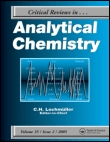
CRITICAL REVIEWS IN ANALYTICAL CHEMISTRY
Transforming Discoveries into Comprehensive Reviews.Critical Reviews in Analytical Chemistry, published by Taylor & Francis Inc, stands as a pivotal journal in the field of analytical chemistry, contributing significantly to its advancement since its inception in 1989. With an impressive Q1 ranking in the 2023 analytical chemistry category, it positions itself among the top 15 journals in the field, reflecting its high impact and relevance, as evidenced by a 90th percentile Scopus rank. This esteemed journal is dedicated to publishing comprehensive reviews that synthesize current research and emerging methods in analytical techniques, making it an invaluable resource for researchers, professionals, and students alike. With the goal of fostering innovation and collaboration, Critical Reviews in Analytical Chemistry continues to address challenges and breakthroughs within the sphere of analytical methodologies, ensuring its authors and readers remain at the forefront of scientific discovery.

Brazilian Journal of Analytical Chemistry
Connecting Experts to Drive Analytical ExcellenceBrazilian Journal of Analytical Chemistry, published by VISAO FOKKA COMMUNICATION AGENCY, serves as a vital platform for those engaged in the field of analytical chemistry, especially within the Latin American context. With an ISSN of 2179-3425 and an E-ISSN of 2179-3433, this journal aims to promote high-quality research and advancements in analytical methodologies, instrumentation, and applications spanning from 2010 to the present. Although it currently holds a Q4 rank in Analytical Chemistry by Scopus and is placed at the 24th percentile, its commitment to open access publishing provides invaluable opportunities for widespread dissemination of knowledge, catering to researchers, professionals, and students alike. The journal's editorial board comprises emerging and established experts aiming to bridge gaps in analytical chemistry research, particularly in a Brazilian and broader South American context. Situated in São Paulo, Brazil, the journal's role in fostering innovation and collaboration in analytical techniques makes it an essential resource for the academic community.

JOURNAL OF ANALYTICAL CHEMISTRY
Connecting Minds in the World of Analytical ChemistryJOURNAL OF ANALYTICAL CHEMISTRY, published by PLEIADES PUBLISHING INC, stands as a pivotal resource in the field of analytical chemistry, offering an innovative platform for researchers, professionals, and students to advance their knowledge and contribute to the discourse within the discipline. With an ISSN of 1061-9348 and an E-ISSN of 1608-3199, this journal features a focused exploration of analytical methodologies, instrumentation developments, and applications across various domains, contributing to practical and theoretical advancements in the field. Currently ranked in the Q3 category in Analytical Chemistry with a Scopus rank of #111 out of 156, it provides critical insights and innovation strategies for professionals aiming to enhance their analytical capabilities. Access to the journal is through standard subscription models, and it covers an extensive range of topics pertinent to the discipline from 1996 to 2024. Engage with the JOURNAL OF ANALYTICAL CHEMISTRY to be part of a vibrant research community dedicated to push the boundaries of analytical practices.